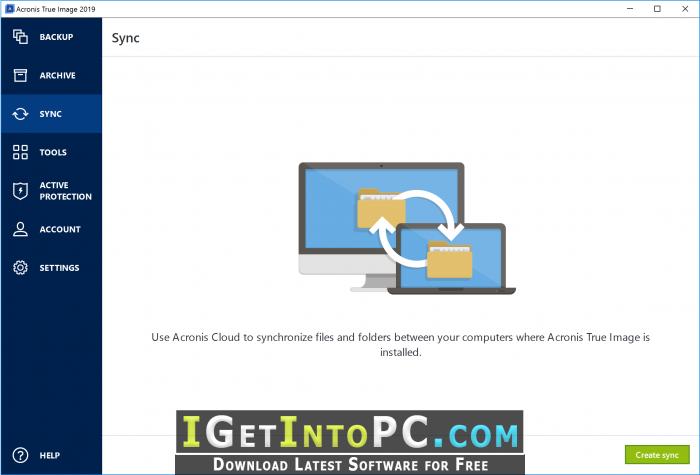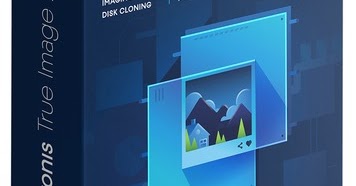Acronis True Image 2018 Cracked + Bootable iso Full Version Acronis True Image: is a tool which lets you back up your computer thoroughly, & preserves a complete image of your entire system in the acronis cloud or on a local hard disk drive. Learn how to set Bootable USB options in Acronis True Imagehow to make a Bootable USB windows 10 how to make Bootable USB windows 8.1how to make Bootable U.
Hello Forum
Is TrueImage able to bachkup and restore Appe Mac BootCamp Windows 7 partition (if booted from the bootable
rescue media(DVD)) ?
Thank's a lot for any feedback!
Ralph

Ralph, please see the ATI 2018 for Mac FAQ document which should answer your question. See the section shown below:
Yes, you can back up the Boot Camp partition along with the hard drive where Boot Camp is installed. The backup will contain all the data stored on the drive, including the Boot Camp partition.
You have several recovery options:

- You can recover the Boot Camp partition along with other data by recovering the entire hard drive
- You can recover the Boot Camp partition separately by selecting this partition only and unchecking other check boxes in the Recovery wizard
- You can recover files from the Boot Camp partition
Thank you very much Steve for the help!
Ralph
You can create a rescue bootable media - a standalone version of Acronis True Image that you can use to boot a crashed machine or a machine without any operating system and restore an image of your system. Follow these instructions to create a bootable media.
How to create Acronis Bootable Media on a Windows computer
1. In the Tools section, click Rescue Media Builder:
2. Choose media creation method:

- Simple—This is the easiest option, suitable for most users. Acronis True Image will choose the optimal media type for your computer. If you use Windows 7 or a later version, WinRE-based media will be created. Otherwise, Acronis Media Builder will create a Linux-based media.
- Advanced—This option allows you to choose a media type, therefore you can create the rescue media not only for your computer, but for a computer running a different Windows version.
1. Select a destination for the media:
- CD/DVD
- USB flash drive
- ISO image file (you can burn the ISO image to CD/DVD separately)
- WIM image file (available only for WinPE-based media)
2. Click Proceed:

First, select the bootable media type: WinPE-based media or Linux-based media.
Using bootable media created with WinPE may provide better compatibility with your computer’s hardware because the preinstallation environment uses Windows drivers.
If you select the option 'WinPE-based media':
1. Select architecture and toolkit:
- Choose 64-bit (x64), regardless of whether your Windows is 64-bit or 32-bit.
Note on the option '32-bit (x86)':
The option '32-bit (x86)' under the 'Architecture' drop-down list is for very rare cases of tablets and other devices, that run 32-bit UEFI firmware - not to be confused with 32-bit Windows! - Select a toolkit that you want to be used for the rescue media creation. Windows Recovery Environment is recommended, because it usually has all the drivers required for the successful hardware recognition. In case of significant hardware upgrade scenarios, like a migration from old SATA HDD to a faster m.2 NVMe SSD you may need to add drivers for the new hardware on the next step of the Media Builder.
- If the Windows Recovery Environment is missing or Acronis Media Builder is unable to detect it, choose the second or third option. If you plan on using NMVe / M.2 / U.2 / RAID / PCIe, the second option (Windows 8, 8.1 and Windows 10) is preferred, even if the operating system inside the backup is still Windows 7, because here the operating system refers to the choice of the base of the bootable media, the small 'portable' OS that runs inside the bootable media, completely independent from the operating system inside the backup.
- If you choose Windows AIK or Windows ADK and you do not have the selected kit installed on your computer, then you first need to download it from the Microsoft website, and then install the required components—Deployment Tools and Windows Preinstallation Environment (Windows PE).
2. For better compatibility with your hardware, you can select drivers to be added to the media. Because finding the right drivers can be time consuming, you can skip this step, finish creating a bootable media, try and boot the computer from it and see if the disks / network / NAS are detected successfully in the Recovery's 'Browse' dialog window. If some hardware is not detected, re-create the bootable media, this time not skipping this step and adding the drivers.
The drivers must be extracted in a folder so that individual files .inf, .sys, .cat etc are present. If the drivers are in a single .exe or .msi file, try launching this file, see if it offers an option to extract rather than install drivers.
Download and unzip drivers from the computer manufacturer's website. You need drivers, that are listed under 'Storage', 'Chipset', 'Disks', 'SATA', 'AHCI', 'RAID', 'NVMe', 'PCIe', 'M.2', 'U.2', 'USB', 'Network', 'Ethernet', 'Wi-Fi' sections. If you do not need network support, skip 'Ethernet', 'Network' and 'Wi-Fi'.
Sometimes computer manufacturers do not provide the drivers in extractable format, or the PC's hardware could have been customized afterwards. In such case you need to figure out the model of the controller that is used to access the disk and find the drivers for it in zip/rar/7z format.
One of the most popular drivers that are needed for a successful internal drive recognition, and that are missing in the default clean WinPE media, are Intel RST drivers.
Download and unzip the latest version of Intel RST drivers that support the hardware where the bootable media will be used. If you are unsure about what model of Intel controller is used, launch Windows Start menu, type cmd, right-click the found result and select 'Run as administrator' or 'More'-'Run as administrator', then execute the following command:
wmic path win32_pnpentity where 'caption like '%Chipset%' OR caption like '%AHCI%' OR caption like '%RAID%' OR caption like '%SATA%' get caption
Note that the above command should be run on the computer where the bootable media is intended to be used, not where the media builder is running (if these are different computers).
Find the latest version of Intel RST drivers at https://downloadcenter.intel.com/product/55005/Intel-Rapid-Storage-Technology-Intel-RST-
Version 16.8: https://downloadcenter.intel.com/download/28400/Intel-Rapid-Storage-Technology-Intel-RST-User-Interface-and-Driver-for-Intel-7th-8th-Generation-Platforms
- Intel® 300/240 Series Chipset Family
- Intel® 200 Series Chipset Family SATA AHCI/RAID Controller
- 7th Generation Intel® Core™ Processor Family Platform I/O SATA AHCI/RAID Controller
- Intel® 100 Series/C230 Series Chipset Family SATA AHCI/RAID Controller
Version 15.9 https://downloadcenter.intel.com/download/27400/Intel-Rapid-Storage-Technology-Intel-RST-User-Interface-and-Driver
- Intel® 200 Series Chipset Family SATA AHCI/RAID Controller
- 7th Generation Intel® Core™ Processor Family Platform I/O SATA AHCI/RAID Controller
- Intel® 100 Series/C230 Series Chipset Family SATA AHCI/RAID Controller
- 6th Generation Intel® Core™ Processor Family Platform I/O SATA AHCI/RAID Controller
Version 14.8 https://downloadcenter.intel.com/download/26759/Intel-Rapid-Storage-Technology-Intel-RST-User-Interface-and-Driver
- Intel(R) 9 Series Chipset Family SATA AHCI/RAID Controller
- Intel(R) 8 Series/C220 Series Chipset Family SATA AHCI/RAID Controller
- Intel(R) 7 Series/C216 Series Chipset Family SATA AHCI/RAID Controller
- Intel(R) C600 Series Chipset SATA AHCI Controller
Version 12.9 https://downloadcenter.intel.com/download/23496/Intel-Rapid-Storage-Technology-Intel-RST-User-Interface-and-Driver?product=55005, requires an earlier version of Windows ADK.
- Intel(R) 8 Series/C220 Series Chipset Family SATA AHCI/RAID Controller
- Intel(R) 7 Series/C210 Series Chipset Family SATA AHCI/RAID Controller
- Intel(R) 6 Series/C200 Series Chipset Family SATA AHCI/RAID Controller
- Intel(R) 5 Series/3400 Series SATA AHCI/RAID Controller
- Intel(R) X79 Express Chipset
Version 11.7 https://downloadcenter.intel.com/download/22194/Intel-Rapid-Storage-Technology-Intel-RST-User-Interface-and-Driver?product=55005, requires an earlier version of Windows ADK
RAID Controllers:
- Intel(R) Desktop/Workstation/Server Express Chipset SATA RAID Controller
- Intel(R) Mobile Express Chipset SATA RAID Controller
- Intel(R) ICH7MDH SATA RAID Controller
- Intel(R) ICH7R/DH SATA RAID Controller
AHCI Controllers:
- Intel(R) 7 Series/C216 Chipset Family SATA AHCI Controller
- Intel(R) 7 Series Chipset Family SATA AHCI Controller
- Intel(R) Desktop/Workstation/Server Express Chipset SATA AHCI Controller
- Intel(R) Mobile Express Chipset SATA AHCI Controller
- Intel(R) 5 Series/3400 Series SATA AHCI Controller
- Intel(R) 5 Series 4 Port SATA AHCI Controller
- Intel(R) 5 Series 6 Port SATA AHCI Controller
- Intel(R) ICH10D/DO SATA AHCI Controller
- Intel(R) ICH10R SATA AHCI Controller
- Intel(R) ICH9M-E/M SATA AHCI Controller
- Intel(R) ICH7M/MDH SATA AHCI Controller
- Intel(R) ICH7R/DH SATA AHCI Controller
After figuring out which version suites the hardware where the bootable media will be used, click 'f6flpy-x64.zip' on the left side to download the driver files, regardless of whether your Windows is 32 or 64-bit.
Note on the option 'f6flpy-x86.zip':
You will want to choose 'f6flpy-x86.zip' instead in very rare cases - only for running the bootable media on a 32-bit UEFI firmware (not to be confused with 32-bit Windows!).
Unzip the downloaded zip archive, then click the plus sign in Acronis Bootable Media Builder and select the unpacked folder. Then click Next button.
3. Select a destination for the media:
- CD/DVD
- USB flash drive
- ISO image file
- WIM image file
- 4. Click Proceed.
If you select Linux-based media
1. Select a destination for the media:
- CD/DVD
- USB flash drive
- ISO image file
On this step you can also specify startup parameters for bootable media, for better compatibility with certain hardware. See Bootable media startup parameters for more information
2. Click Proceed to create the bootable media
You can also download a Bootable Media ISO image file from your Acronis account: see How to download Acronis bootable media ISO. This ISO image is Linux-based.
To be able to recover to dissimilar hardware, create Acronis Bootable Media with Universal Restore. See Creating Acronis Universal Boot media and Restoring to dissimilar hardware with Acronis Universal Restore.
We recommend to test your bootable media so that you can be sure it will boot when needed: see User Guide for instructions.
How to create Acronis Bootable Media on a Mac
Acronis True Image Bootable Iso
We strongly recommend creating a bootable media immediately after the first backup; if the operating system crashes, the only way to restore it from Acronis True Image 2020 backup is restoring from the bootable media.
If your Mac includes the Apple T2 chip then you need to modify Secure Boot settings in order to boot from Acronis Bootable Rescue Media: see Acronis True Image on Mac: Changing startup options on Apple T2 chip
To create Acronis bootable rescue media:
1. Connect a removable drive to your Mac.
The drive must have 4 GB (or more) of free space. For example, you can use an external hard drive or a USB flash drive. Note that CD and DVD media are not supported.
Acronis True Image Recovery Iso
2. Open Acronis True Image 2020.
3. In the File menu, click Create Acronis Bootable Media. The Acronis Media Builder window opens.
4. Select the drive that you want to make bootable.
5. Click Create Media. If the drive is not empty, Acronis True Image 2020 will ask you to confirm deleting all the data stored on the drive. To confirm, click Erase.
6. When the progress is complete, disconnect the media and keep it in a safe place. You can store your own data on the media, but make sure that you do not delete or modify the Acronis boot files.
We recommend that you create a new rescue media every time you upgrade your Mac OS X to a newer version. Otherwise, your rescue media may not work properly.